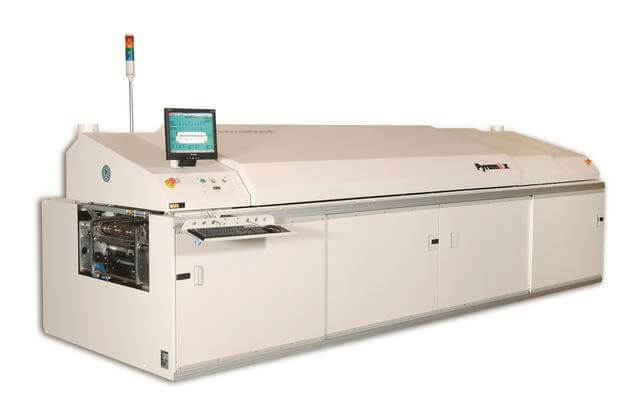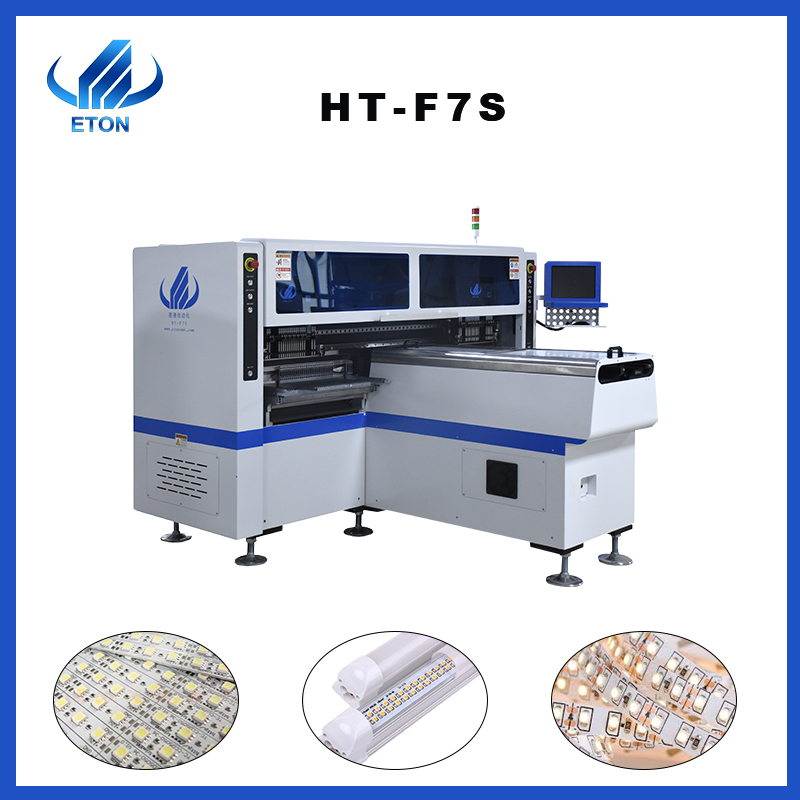

In general reflow soldering is faster and more accurate than hand soldering. Further, high-end ovens achieve fast heating and cooling due to more efficient heating elements and water cooling. These advantages are accomplished by using a conveyer belt that advances the Circuit Boards through multiple oven compartments at varying temperatures. These ovens usually provide higher temperature capability, tighter temperature tolerances, and the ability to solder large volumes of PCBs. High-end reflow ovens are typically large standalone devices suited for a factory floor space and can cost $10,000 or more.

Just think – you could assemble your Printed Circuit Board in your pajamas from the comfort of your kitchen! If your budget is even tighter than $50, you could build your own reflow oven using a microcontroller and a toaster oven. These ovens are appropriate if you do relatively low volume PCB assembly or are on a tight budget, and range anywhere from $50 to $10,000. Low- and medium-end reflow ovens could be your best option if you need it to fit discretely on a table or bench in your engineering workspace. Now that you’ve thought about the thermal performance needed for your reflow soldering, another practical consideration is the reflow oven size. If you purchase a reflow oven with multiple thermocouples, you can ensure all important of the PCB heat sufficiently and more effectively “cook” your PCBs. Just like your cooking oven at home, reflow ovens have hot areas, cold areas, and the temperature isn’t always 100% accurate. These sensors ensure the oven heats and cools as desired. Reflow ovens usually have one or more thermocouples inside them to sense the temperature profile. Custom thermal profiles will give you the flexibility to efficiently solder different kinds of Printed Circuit Boards with various solder pastes.Īlong with thermal profiles, temperature precision and sensing are an important consideration for the reflow process. For example, the larger heating element will heat up a small PCB much faster than a large PCB, and therefore a shortened thermal profile can be created to provide the fastest soldering possible.Īdditionally, environmentally friendly applications may require lead-free solder paste, which has a higher melting point than traditional tin-lead based solder paste, and in so requiring an improved hot plate. This feature is invaluable if you have different types of Printed Circuit Boards to assemble and need to optimize your time.
#Reflow ovens software
There are advantages and disadvantages to each.Īn advantage of more higher-end reflow ovens is better software and parts like a better heating plate or heating element and circuit board allows the option to program several custom thermal profiles and save them in the oven’s software. I have used both a $50 “reflow oven” (a.k.a. a toaster oven) and much more sophisticated and expensive reflow ovens. Many companies sell reflow ovens, but let’s talk about a few factors you should consider before your purchase.ĭepending on your budget, you can buy a reflow oven for $50 to $50,000 or anywhere in between. These temperatures should be low enough to ensure the printed boards components are not damaged, yet high enough to melt the solder paste. The four main temperature zones of the thermal profile include preheat, soak, reflow, and cooling. But sometimes the thermal profile must be modified for the best soldering performance.

Electronics manufacturers provide recommended thermal profiles that serve as a good starting point. The temperature of the hot air in the oven follows a thermal profile that provides the optimum heat and cooling rate for the given solder paste and components. The solder reflow process is based on convection heating, similar to that in your home oven. Finally, the PCB is placed inside the convection reflow oven to begin the heating process. The components are placed in position and are usually held in place by the adhesive nature of the solder paste. To begin, a solder paste mixture containing both solder mask and flux is applied with a stencil to the fabricated PCB.
#Reflow ovens manual
Reflow soldering can quickly assemble high-density PCBs that may pose manual hand soldering challenges to even the most experienced engineers and PCB technicians. This post explores the factors involved in choosing a convection reflow oven that is right for you. While the ambitious hobbyist may choose to build a toaster oven “reflow oven”, many businesses can save time and resources in the soldering process by purchasing a commercial bench reflow oven. If you have assembled dense PCBs with many small surface-mount components or used ball grid array (BGA) devices in your designs, you have undoubtedly come across solder PCB reflow ovens. Whether you’re an electrical engineer or an electronics hobbyist, solder reflow ovens enable fast and convenient printed board (PCB) assembly.


 0 kommentar(er)
0 kommentar(er)
